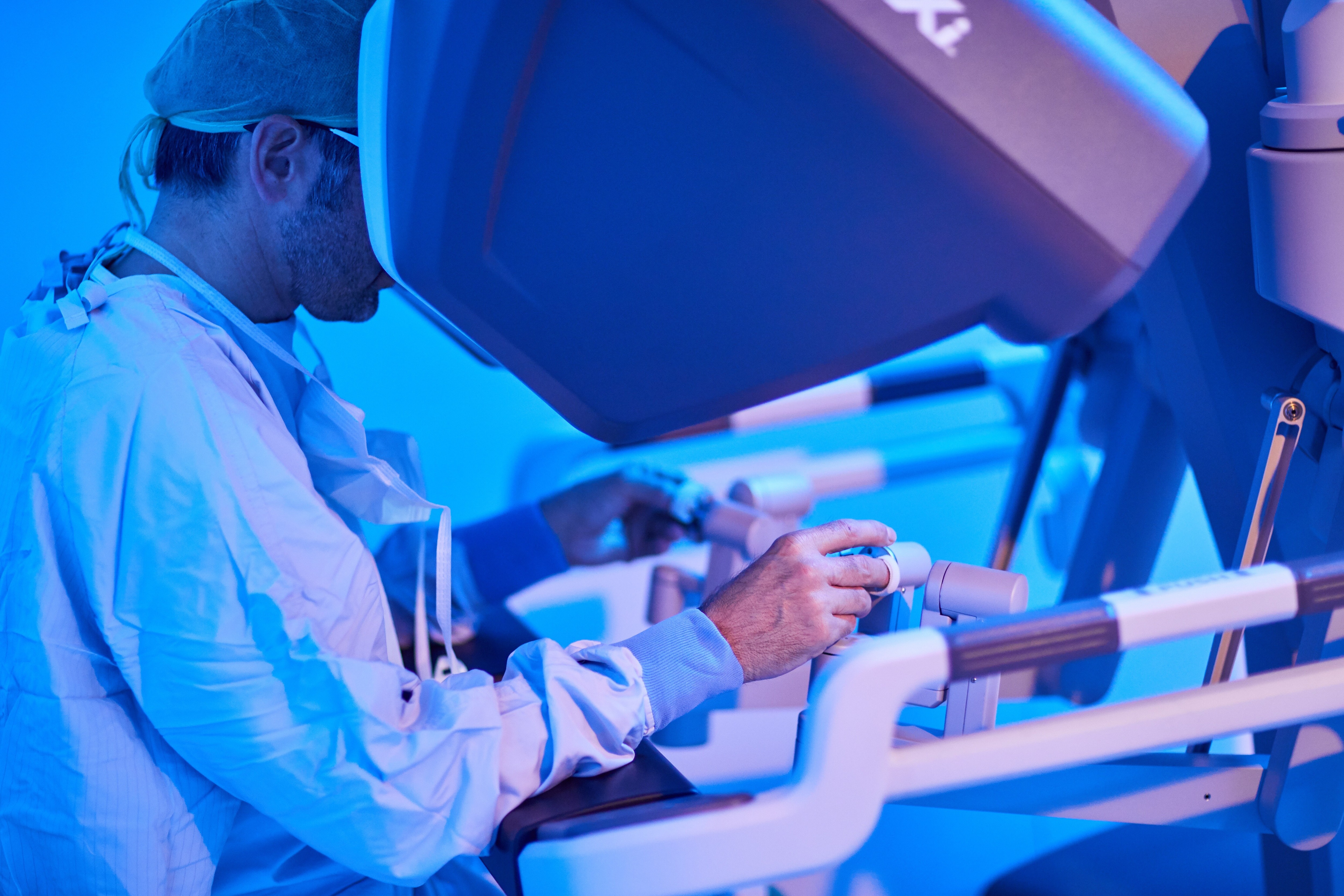The Future of AI Surgeons

The picture shows a doctor is using the surgical robot in an operation. (VCG)
By Yu Haoyuan
A few weeks ago, several videos about the performances of China's Edge Medical Robotics surgical robot peeling quail eggs, stitching raw egg membranes, and folding pocket paper cranes attracted the attention of netizens.
The dexterity of Edge's robot means they can meet the needs of urological surgery for prostate cancer and kidney cancer as well as other complex operations. It performed well in trials and was stable during the operations, reducing the amount of bleeding and improving the postoperative recovery.
The development of medical robots can be traced back to 1985. According to application scenarios, medical robots can be classified into surgical robots, rehabilitation robots, service robots and auxiliary robots. Among them, surgical robots are the most dominant category, accounting for about 37 percent.
The da Vinci (Surgical System), created in 2000, is now the most successful robotic-assisted surgical system with minimal invasion. With excellent performance in urology, general surgery, thoracic surgery, gynecology, pediatric surgery, cardiac surgery, and head and neck surgery, da Vinci is widely used in minimally invasive treatment in most fields of surgery.
Compared with normal open surgeries, robotic surgery offers many benefits to both doctors and patients. With the help of machines, doctors can not only increase precision by being more flexible and gaining enhanced vision, but also reduce the number of people involved in the operation, which can improve efficiency and reduce labor costs at the same time. As for patients, there are many advantages, such as shorter hospitalization, less pain and discomfort, less time for recovering and returning to normal activities, smaller incisions, as well as minimal scarring.
In 2016, Children's National Health System in Washington D.C. developed the world's first automatic surgical robot, Smart Tissue Autonomous Robot (STAR). The STAR has already performed soft-tissue surgery successfully. It can be operated autonomously by a particular algorithm program, avoiding human errors in operation. Surgeons can just stand by to supervise the machine without being involved in the controls, and suspend operations at any time if an emergency happens.
Will machines finally take over all kinds of surgeries in the near future? Shafi Ahmed, a famous cancer specialist and virtual reality surgery pioneer, thinks its imminent.
It is only a matter of time before robots replace surgeons in the operating theater, he said.

